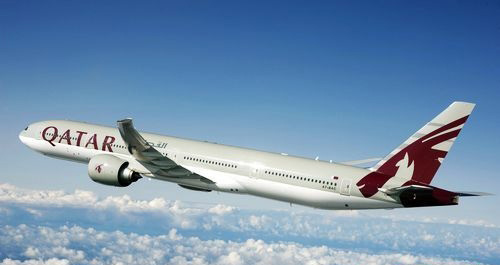 如果财富就代表强大的话,那么卡塔尔人应该相当强大了。油价的回升和巨大的天然气储备让这个拥有170万人口的波斯湾酋长国成为世界上人均最富裕的国家。以同等购买力来看,卡塔尔2010年的人均GDP估计在88,000美元以上。
如果财富就代表强大的话,那么卡塔尔人应该相当强大了。油价的回升和巨大的天然气储备让这个拥有170万人口的波斯湾酋长国成为世界上人均最富裕的国家。以同等购买力来看,卡塔尔2010年的人均GDP估计在88,000美元以上。
卡塔尔的天然气储量丰富,排名世界第三。这个国家已经在天然气液化和出口的基础设施方面投资了很多,并且计划实现经济的多样化增长,而不像邻国迪拜那样过度地开采。同时,卡塔尔吸引跨国金融公司和美国大学的卫星学院来到本国。该国政府在基础设施建设上已经花费了巨额财产,包括建深水海港,机场和铁路网,所有这些的目的是让卡塔尔成为商业上和2022年世界杯的主人。
最富有的国家排名中,强大的小鱼卢森堡以同等购买力81,000美元的人均GDP排名第二。这个只有50万人口的国家在20世纪后半期就成为世界的金融中心之一,这要归功于它森严的银行保密法和避税港的美誉。该榜单排名第三的是新加坡,其世界购买力评价(PPP)人均GDP已经接近56,700美元,是科技、制造业和金融中心。
《美国时报》对最富有的国家进行排名时,主要参考的是同等购买力下182个国家的人均GDP水平。我们使用的是国际货币基金组织2010年的数据,也是目前最为可靠的数据资料(只有个别国家的GDP数字是预测的)。世界购买力评价(PPP)GDP是经济学家在对各国进行比较时最常用的数据,这一数据综合考虑了生活相对成本和通货膨胀率,而不仅只考虑汇率,因为这样的数据可能不准确。
“可以说,这是把不同国家的GDP拿来比较的唯一方法,”Gian Luca Clementi说道,他是纽约大学伦纳德N.斯特恩商学院的经济学副教授。“这是最被认同的数据。”他继续说道,“这些数据在选取时必须有所保留。”他解释说,那是因为许多因素会导致GDP的比较产生误导性,其中包括如何判断各国商品质量的差异。
“还有,有些国家的财富分配比较均等,而有些国家的财富分配却严重失衡,”Clementi说。“例如,在卡塔尔,财富分配非常失衡,大部分人口实际上非常贫穷,高GDP是因为石油收入。而且,如果把GDP作为衡量一个国家发展潜力的指标的话,那么在卡塔尔,其发展将取决于是否有效地利用这些财富进行投资。”
与卡塔尔一样,排名前15的国家中很多财富都是依靠自然资源得来的。排名第四的挪威,国家出口额中石油几乎占了一半,成为其近52,000美元人均GDP的主要贡献力量;并且,挪威也是世界上最大的天然气出口国之一。同时,座落于婆罗洲岛的文莱,得益于丰富的石油和天然气资源,人均GDP超过48,000美元,排名第五。阿联酋的石油和天然气收入占其GDP总收入的25%,人均国民生产总值达到将近47,500美元。
其他至少沾了一点自然资源光的富裕国家有:澳大利亚,排名11;加拿大,排名14;科威特,排名15,它的GDP收入至少一半要依靠原油储备,几乎所有出口和政府收入也要依靠原油。
那么,哪些国家是最穷的?政治和经济都脆弱的三个非洲国家:布隆迪,利比里亚和刚果民主共和国,这几个国家的人均GDP分别是400美元,386美元和312美元。
If wealth is power, then Qataris have some serious muscle to flex. The Persian Gulf emirate of 1.7 million people ranks as the world’s richest country per capita thanks to a rebound in oil prices and its massive natural gas reserves. Adjusted for purchasing power, Qatar booked an estimated gross domestic product per capita of more than $88,000 for 2010.
Qatar has the third-largest reserves of natural gas in the world, and it has invested heavily in infrastructure to liquefy and export it, as well as to diversify its economy, without overreaching as much as nearby Dubai. Qatar has lured multinational financial firms to the country, as well as satellite campuses of U.S. universities. The government is pouring money into infrastructure, including a deepwater seaport, an airport and a railway network, all with an eye to making the country a better host for businesses and the 2022 World Cup.
In second place on our list is the mighty minnow Luxembourg, with a per capita GDP on a purchasing-power parity basis of just over $81,000. The country of half a million people became a financial hub in the latter half of the 20th century, in part thanks to strict banking secrecy laws that earned it the reputation of a tax haven. It’s followed at No. 3 by the city-state of Singapore, which thrives as a technology, manufacturing and finance hub with a GDP (PPP) per capita of nearly $56,700.
To rank the world’s wealthiest countries, Forbes looked at GDP per capita adjusted for purchasing power for 182 nations. We used InternationalMonetary Fund data from 2010, the most recent available (GDP figures for some countries were projections). The PPP-adjusted GDP—preferred by economists when making international comparisons—takes into account the relative cost of living and inflation rates, rather than just exchange rates, which may distort real differences in worth.
“This is, essentially, the only way we have to compare GDPs across countries,” notes Gian Luca Clementi, an associate professor of economics at New York University’s Leonard N. Stern School of Business. “It’s the most accepted data.” Still, he adds, “The numbers must be taken with a grain of salt.” That’s because there are a host of issues that can make any GDP comparisons misleading, including how the quality of goods varies from country to country, he explains.
“Also, in some countries, the wealth is equally distributed, while in others it’s very unequally distributed,” Clementi says. “In Qatar, for example, the way it’s distributed is very unequal, and much of the population is actually very poor. The GDP is high because of oil revenues. And, if I were to use the GDP as an indicator of how well a country will do in the future, in Qatar what will matter is how well they actually invest it.”
Like Qatar, many of the countries in the top 15 spots on our list rely on natural resources to fill their coffers. In Norway, which ranks fourth, petroleum accounts for nearly half of exports and is the main contributor to its PPP-adjusted GDP per capita of nearly $52,000; the country is also one of the world’s largest gas exporters. Brunei, meanwhile, located on the island of Borneo, reaps the benefits of extensive petroleum and natural gas fields and comes in at No. 5 with a PPP-adjusted per capita GDP of just over $48,000. And the United Arab Emirates looks to its oil and gas for about 25% of its GDP, which is nearly $47,500 per capita (PPP).
Other well-heeled countries benefiting at least in part from natural resources are Australia, ranking at No. 11; Canada, at No. 14; and Kuwait, at No. 15, which relies on its crude oil reserves for at least half of GDP, and almost all of its export revenues and government income.
So which countries are poorest? A trio of politically and economically fragile African nations: Burundi, Liberia and the Democratic Republic of Congo, where GDPs (PPP) per capita are $400, $386 and $312, respectively.
 如果财富就代表强大的话,那么卡塔尔人应该相当强大了。油价的回升和巨大的天然气储备让这个拥有170万人口的波斯湾酋长国成为世界上人均最富裕的国家。以同等购买力来看,卡塔尔2010年的人均GDP估计在88,000美元以上。
如果财富就代表强大的话,那么卡塔尔人应该相当强大了。油价的回升和巨大的天然气储备让这个拥有170万人口的波斯湾酋长国成为世界上人均最富裕的国家。以同等购买力来看,卡塔尔2010年的人均GDP估计在88,000美元以上。
